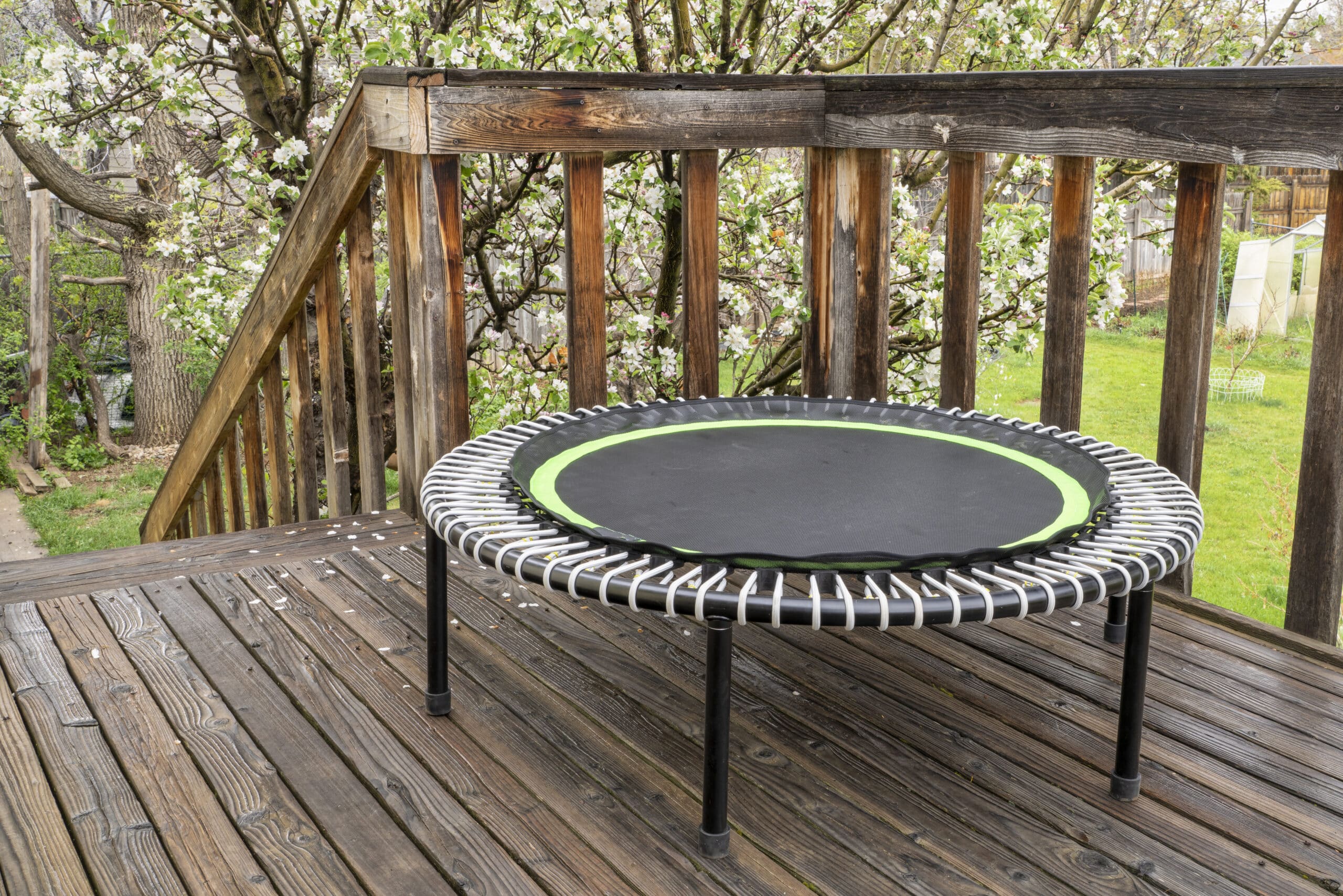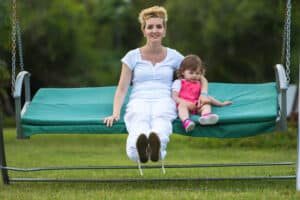Can you put a trampoline next to a fence?
Key Takeaways
- Before placing a trampoline near a fence, it is crucial to check local regulations or bylaws governing trampoline placement in the specific area.
- When placing a trampoline near a fence, consider factors such as space and clearance, stability and support, and avoiding obstacles to ensure safety.
- Placing a trampoline near a fence may impact privacy, so alternative placement options or privacy-enhancing measures may need to be considered.
When it comes to placing a trampoline in your backyard, one common question that arises is whether it can be placed next to a fence. While the specific safety guidelines for this scenario may vary depending on local regulations and personal preferences, it is important to consider certain factors to ensure the safety and enjoyment of trampoline use. Let’s explore this topic in more detail.
Local Regulations and Guidelines
Before deciding to place a trampoline near a fence, it is crucial to check with your local authorities, lawyer, or homeowner’s association to determine if there are any regulations or bylaws governing the placement of trampolines in your specific area. Some localities may have specific guidelines regarding the distance between a trampoline and a fence, while others may not have any specific rules. It is always better to be informed and comply with any applicable regulations to avoid any potential legal issues.
Safety Considerations
While there may not be specific safety guidelines mentioned for placing a trampoline near a fence in the provided sources, it is important to consider some general safety considerations when making this decision.
1. Space and Clearance
When placing a trampoline near a fence, ensure that there is sufficient space and clearance around it. This includes leaving enough room on all sides of the trampoline, ideally at least five feet of clearance, to prevent any accidents or collisions with the fence. Adequate space allows for safe jumping and landing without the risk of hitting the fence.
2. Stability and Support
Positioning the trampoline near a sturdy fence or wall can provide added stability and support. The fence can act as a barrier and help prevent the trampoline from shifting or tipping over during use. However, it is essential to ensure that the fence itself is secure and in good condition to provide reliable support.
3. Avoiding Obstacles
It is crucial to select a location that is free from obstacles such as trees, power lines, or other potential hazards. Placing the trampoline too close to a fence with overhanging branches or near power lines can pose risks and increase the chances of accidents. Clear the area around the trampoline to create a safe jumping environment.
4. Privacy Considerations
In some cases, placing a trampoline near a fence may impact privacy, as it allows users to see directly into your backyard or home. If privacy is a concern, you may need to consider alternative placement options or explore privacy-enhancing measures such as adding privacy screens or landscaping features to mitigate this potential issue.
Best Practices for Trampoline Placement
While the specific question of placing a trampoline next to a fence may not have detailed guidelines available in the provided sources, it is helpful to consider some best practices for trampoline placement in general. These guidelines can help ensure a safe and enjoyable trampoline experience for everyone.
- Choose an area with open grassy space and a soft landing surface to minimize the risk of injury.
- Ensure the ground is level and free from obstacles like trees, fences, or power lines.
- Position the trampoline away from pools, ponds, or steep drop-offs to eliminate potential hazards.
- Provide enough clearance around the trampoline, leaving at least five feet of space on all sides.
- Trim any overhanging branches and ensure sufficient vertical clearance from power lines.
- Consider placing the trampoline in a corner of the backyard to maximize space.
- Avoid setting up the trampoline on sloped or uneven ground, as it can affect stability.
- Follow any local regulations and obtain necessary permits or permissions for trampoline installation.
Conclusion
Placing a trampoline next to a fence can be a viable option, but it is essential to consider safety guidelines and any local regulations that may dictate the placement of trampolines. Ensure there is sufficient space and clearance around the trampoline, position it near a sturdy fence or wall for added stability, and avoid any potential obstacles or privacy concerns. By following best practices and considering individual circumstances, you can make an informed decision about the placement of your trampoline.
Related Websites:
- Trampoline without Fence – GetTrampoline.com
- Where to Put Your Trampoline – TrampolineZone.net
- 13 Places Where You Should and Shouldn’t Put a Trampoline – SunshineandPlay.com
- Can You Have a Trampoline Without a Fence? – YardLifeMaster.com
- Are Trampolines an Invasion of Privacy and How to Deal With It? – PrivacyArena.com
- Can You Have a Trampoline Without a Fence? – TrampolineMind.com
FAQs:
Q: What safety concerns should I consider when placing a trampoline near a fence?
When placing a trampoline near a fence, it is important to have sufficient space around the trampoline to ensure safety. Placing a trampoline too close to a fence can pose potential risks, such as collisions with the fence or injuries caused by hitting the fence while jumping.
Q: Are there any local regulations or guidelines I need to follow when placing a trampoline near a fence?
Yes, it is significant to check local regulations or homeowners’ association guidelines regarding trampoline placement. Compliance with any specific rules is essential to ensure the safe and legal placement of the trampoline.
Q: What is the recommended distance between a trampoline and a fence?
The general recommendation is to maintain a sufficient distance between a trampoline and a fence. This is to avoid collisions with the fence and prevent injuries. The specific distance may vary, but it is important to ensure there is enough space for safe jumping.
Q: Are there any minimum distance requirements for placing a trampoline near a fence?
There might be minimum distance requirements to ensure safety when placing a trampoline near a fence. It is advisable to consult local regulations or trampoline manufacturer guidelines for specific recommendations. However, a general guideline for determining an appropriate minimum distance is to allow enough room for safe movement around the trampoline.
Q: How does the type of fence impact trampoline placement and safety?
The type of fence can affect trampoline placement. Solid fences can act as a barrier and minimize the risks of users falling off the trampoline. On the other hand, chain-link fences may not provide the same level of safety. Consider the pros and cons of different fence types in relation to trampoline usage and safety concerns.
Q: What considerations should I have regarding wind when placing a trampoline near a fence?
When placing a trampoline near a fence, it is important to consider wind circulation. The presence of a fence can affect air movement around the trampoline, potentially causing instability. In areas prone to strong winds, it is crucial to secure the trampoline adequately to prevent tipping or damage.
Q: How can I mitigate risks when placing a trampoline next to a fence?
To mitigate risks when placing a trampoline next to a fence, you can take safety precautions. Consider adding padding to the fence or creating a buffer zone between the trampoline and the fence. These measures can help reduce the likelihood of injuries caused by contact with the fence.
Q: Why is regular maintenance important when placing a trampoline near a fence?
Regular maintenance is essential when placing a trampoline near a fence. It is important to regularly inspect both the trampoline and the fence to ensure they are in good condition and free from any safety hazards. Addressing any concerns promptly can help maintain a safe environment for trampoline usage.






